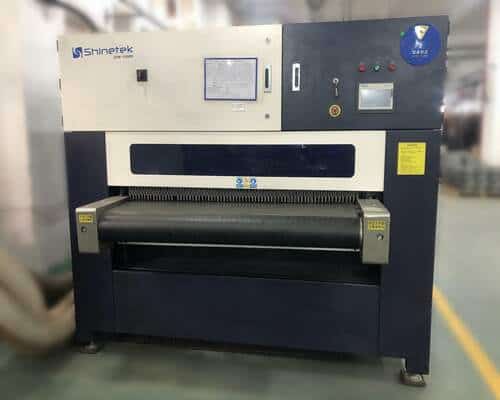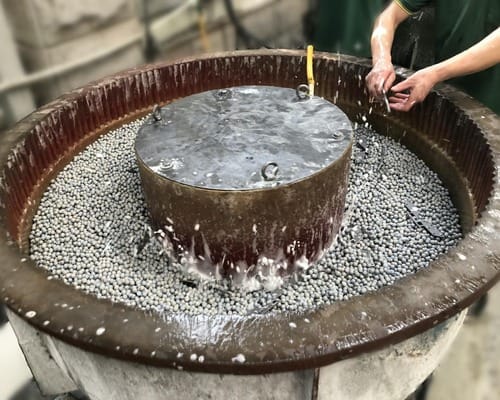The process of sheet metal fabrication entails shaping and manipulating sheet metal to produce a wide range of products and components. Sheet metal is formed into flat, thin sheets, typically made of steel, aluminum, brass, or copper. The fabrication process includes cutting, bending, shaping, and assembling sheet metal to achieve the desired shape and function.
Listed below are the key steps involved in sheet metal fabrication:
- Design: The first step is creating a detailed design or blueprint of the desired product. This includes specifying dimensions, shapes, hole placements, and other necessary details.
- Material Selection: Choose the appropriate type and thickness of sheet metal based on the requirements of the design and the intended application. Different metals offer varying properties such as strength, flexibility, and corrosion resistance.
- Cutting: Sheet metal is cut into the desired shapes using techniques such as shearing, laser cutting, or water jet cutting.
- Forming and Shaping: This is typically done using specialized machines such as press brakes, rollers, or stamping presses. Forming processes include bending, rolling, punching, and deep drawing.
- Joining: Common joining techniques include welding, riveting, and using adhesives or threaded fasteners.
- Finishing: Finishing processes include grinding, sanding, or polishing to remove sharp edges, burrs, or surface imperfections. Surface treatments like painting, powder coating, or plating may be applied to enhance the appearance and protect against corrosion.
Sheet Metal Fabrication from Source International
We utilize advanced equipment and press control systems to efficiently produce a wide variety of sheet metal parts for low to high-volume projects in a large range of sizes and tolerances. We complete our one-stop service with finishing operations to smooth, weld, and coat the surfaces and our world-class testing lab to certify that all parts meet your OEM specifications.
Our ISO 9001-certified facilities focus on precision stamping with the most advanced equipment (from 5 to 500 tons) including Trumpf (Germany) Laser Cutting and CNC Punch Presses, Bystronic (Switzerland) CNC Press Brakes, and many other domestic and imported high-tech equipment. Our competitive advantage is our ability to deliver a diverse range of parts varying in size, shape, and material for multiple industries. The sheet metal materials we specialize in are carbon steel, stainless steel, aluminum, brass, copper, and various other types of sheet metal substrates.
Our team of experts utilizes your AutoCAD, IGES, PDF, or SolidWorks file as a starting point to manufacture custom OEM parts with precise tolerances, ensuring that they consistently meet your specifications. Regardless of the complexity of your design, we’ll find the best way to deliver on-spec parts to you in a timely, cost-effective manner.
We offer turnkey, one-stop custom OEM sheet metal fabrication solutions to meet your needs. Source International also has capabilities in other related metalworking processes including casting, forging, machining, finishing, coating, and 3D additive processes.
Sheet Metal Fabrication Techniques
Our sheet metal fabrication capabilities include the following procedures and techniques:
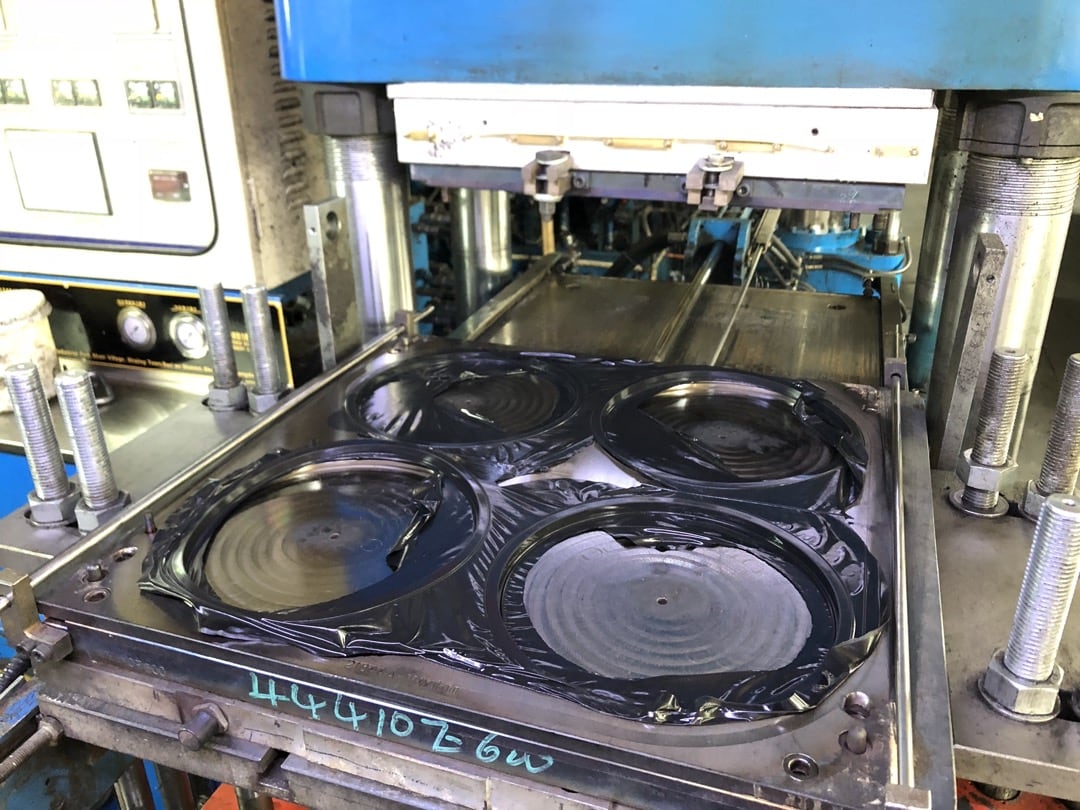
- Stamping and Punching
- Laser Cutting
- Water Jet Cutting
- Deep Draw Hydraulic Press
- CNC Punch Press and Press Brake
- Progressive Punch Press
- Wire Cutting
- 3D Printing
- Co-Bot Bending
- Robot and Co-bot Welding
- Automatic Polishing and Deburring
- Vibration Tumbling
- Powder Coating
- Anodizing
If we don’t have a capability currently and your volume is suitable, we’ll develop new sheet metal fabrication processes and capabilities to meet your requirements. Source International has done this many times for clients who value the trust and working relationship we provide.
Some of the primary sheet metal fabrication processes that we currently offer are:
Stamping
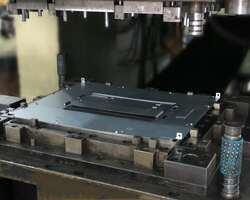 Stamping uses stamp presses to cut and mold metal sheets into a desired shape. Like punching processes, the stamping process comes with benefits and disadvantages.
Stamping uses stamp presses to cut and mold metal sheets into a desired shape. Like punching processes, the stamping process comes with benefits and disadvantages.
The initial cost to set up a custom metal stamping job is substantial and is generally related to the size and complexity of the design. For small-run jobs, this can be cost-prohibitive but once the job is set up large volumes of parts can run cost-effectively with optimal repeatability.
Laser Cutting
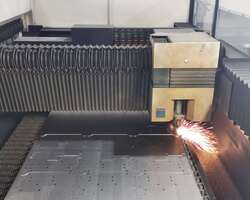
This thermal sheet metal fabrication process works using a laser applied to the workpiece. The laser, consisting of coherent light, cuts the workpiece as it moves along the face of the metal.
What makes laser cutting ideal in many applications is its repeatability, reliability, and ability to cut metals of varying thicknesses. However, fabricators must ensure lasers have the right adjustments to prevent burns and optimize cutting speeds when cutting thick metals. The setup costs for laser cutting are less since it’s done digitally and does not require making custom physical tools.
Water Jet Cutting
Fabricators use a high-pressure water stream that may also contain another abrasive material to cut the designated workpiece. One main advantage of water jet cutting is the ability to cut metal and other materials without impacting their innate structure. It also creates complex cuts in sheet metal more effectively than other processes.
Similar to laser cutting, the setup costs for water jet cutting are lower than stamping and drawing. However, water jet cutting is less efficient than other techniques as it takes longer for the water and abrasives to pierce the workpiece materials, is less cost-effective because of the technology used, and is less accurate due to the thicker material.
Deep Draw Stamping
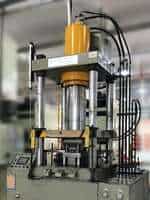
Deep drawing is a metal stamping technique that enables the production of elongated, slender cylindrical components which cannot be achieved through conventional sheet metal stamping methods. The use of hydraulics allows the metal to be slowly drawn under high pressure with a length greater than the diameter of the part. Deep draw stamping is a cost-effective alternative to turning and milling. However, deep draw stamping has substantial mold set-up costs.
CNC Press Brake & Punch Press
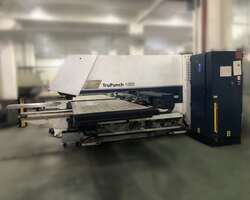 These high-performance systems are engineered for super-accurate repeatability within extremely tight tolerances and with minimal energy use.
These high-performance systems are engineered for super-accurate repeatability within extremely tight tolerances and with minimal energy use.
Powder Coating

In powder coating, a static electric charge is used to deposit a dry powder and after the powder is deposited electrostatically, the metal part is heated at high temperatures to “melt” the flakes and fuse them together and to the metal surface. Source International has developed very precise powder coating processes to ensure consistency of thickness, hardness, flexibility, adhesion, and other variables.
Applications of Sheet Metal Fabrication
Sheet metal fabrication offers advantages that you may not find with other materials, making it ideal for numerous applications across a wide range of industries. Fabricated sheet metal is compatible with many small to large parts and components, such as:
- Automotive: Motorcycle, Aircraft, and Truck Parts and Components
- Transportation: Train, Bus, Boat, ATV, and other Vehicle Parts and Components
- Appliances: Refrigerators, Ovens, and Small Kitchen Appliances
- Electronics: Laptops, Phones, and Other Equipment
- Electrical: Electrical Connectors, Grid Enclosures, Cabinets, and Accessories
- Furniture: Cabinets, Lockers, Tables, Chairs, and Fixtures
- Kitchen Equipment: Metal Sinks, Tables, Counters, and Food Prep Surfaces
- HVAC: Components, Ductwork and Piping
- Home Construction: Garage Doors, Other Rolling Doors, And Steel Shades
- Consumer Goods: Art & Decorations
- Fittings & Supports: Brackets, Mounts, and Hinges
- Medical: Medical Devices, Tools, and Equipment
- Tanks & Storage: All Types of Flammable and Inflammable Liquids
- Building & Construction: Building Parts and Components
·And many more!
Choosing Source International for Your Sheet Metal Fabrication Needs
By partnering with Source International you can rest assured that you’ll get an OEM manufacturing partner who understands your business and can meet your production goals. We take the risk out of sheet metal fabrication with a detailed Product Tech Pack, on-site factory audits, and nearly limitless capacity. There will be no misunderstandings about quality standards. No concerns about raw material availability. And, no delivery black holes.
Source International is an American-owned company in the OEM manufacturing business for more than three decades. We owe our impressive track record to our well-trained staff and rigorous operating procedures. Our teams of product managers, engineers, and technicians ensure each shipment is on spec and that your parts meet all requirements.
Contact us today to learn more about how we can add value to your sheet metal fabrication supply chain.


